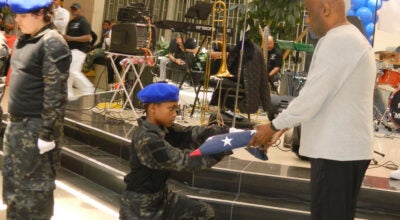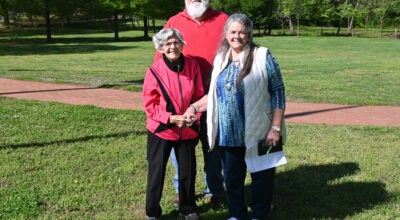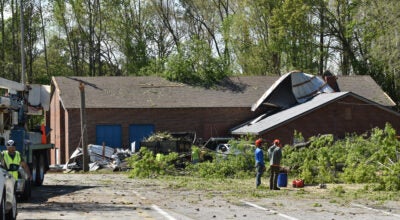Housing Advocacy Commission presents proposal for neglected, abandoned properties
Published 12:00 am Wednesday, August 5, 2015
SALISBURY — Completing a year-and-a-half process, the Housing Advocacy Commission presented an ordinance Tuesday that could mean significant changes in the city effort to address neglected and abandoned properties.
Council set a public hearing on those changes for its next regularly scheduled meeting, 4 p.m. Aug. 18 at City Hall.
In a couple of other significant matters Tuesday, City Manager Lane Bailey reported the city has received an offer of $200,000 from Family Crisis Council for the former Zimmerman’s building at 110 N. Main St.
The city also took steps, thanks to assistance from the N.C. Department of Transportation, to have $40,000 in lights installed under the Interstate 85 bridge at Old Concord Road.
“This is big,” Mayor Paul Woodson said.
In addition, the DOT will use $140,000 in small construction grant money to build 1,000 feet of curb, gutter and sidewalk between Harrell and Ryan streets on Old Concord Road. City Engineer Wendy Brindle said it’s possible there will be enough money for the sidewalk to go under a newly lighted underpass.
The sidewalk project won’t happen until the summer of 2016, but Councilman William “Pete” Kennedy greeted the news of sidewalks and lighting in this area with a “Hallelujah.”
The DOT will design and install a lighting system under the I-85 bridge, but the city will be responsible for providing electrical service, paying the monthly power bill and replacement of any faulty components in the future. Brindle said the cost for service should be $30 to $50 a month.
Barbara Perry, Nate Chambers and Geof Wilson appeared at the council meeting on behalf of the Housing Advocacy Commission. Perry noted the enforcement section of the city code in question had not been updated since 1977.
Hardly any neighborhood in the city is not affected by neglected and abandoned housing, Perry said, and she cited examples for council of how the problem is only a block or two removed from City Hall.
A 2011 study identified more than 750 residential properties that were considered vacant and abandoned.
“The purpose of the following ordinance,” Perry said, reading from a proposed rewrite of Section 10.61 of the city code, “is to focus on neglected and abandoned residential properties that will continue to deteriorate into a condition that cannot be repaired if not addressed immediately.”
“These properties are vulnerable to break-ins, criminal activity, destruction, fire and other unsafe activities. In addition, they attract and/or cause blight to surrounding properties.”
It’s for those reasons, Perry said, that it’s essential the city set standards “that will not allow a residential property to remain in a deteriorated or dilapidated condition for an extended period of time.”
Perry said the Housing Advocacy Commission recognizes the “broken window” theory as one reason this beefed-up ordinance is needed.
“That theory states,” Perry said, reading from the ordinance, “that one broken window, left unrepaired, leads to more broken windows as it gives the appearance that no one cares for or protects the property; that that building becomes increasingly more deteriorated, and that the deterioration may have a ripple effect on other parts of the neighborhood.”
In arriving at its recommended ordinance, the commission had two three-hour workshops that were attended by 100 percent of the members. It ran the final version of the ordinance past the School of Government, which asked whether Salisbury’s proposal could be used as a model for other municipalities if it is ultimately approved.
Perry said the commission, in its research, canvassed other cities and found out what was working and not working in both smaller and larger cities. And the group had input from neighborhood leaders and groups, she said.
The Housing Advocacy Commission’s recommended ordinance gives definitions for “vacant,” “neglected,” “abandoned” and “property.” It also lists the requirements for them, exemptions and penalties for not complying.
Chambers stressed after the meeting that vacant properties are OK as long as they are maintained, meet minimum standards of the housing ordinance and the exterior appearance does not contribute negatively to surrounding property values.
The ordinance defines a “neglected” property as one in which no one is living at the dwelling, it’s in violation of nuisance ordinances, and the exterior appearance is deplorable and/or negatively affects neighboring property values.
It could be fixed and repaired by the owner without causing a major financial hardship, according to the commission’s definition of a neglected property.
An “abandoned” property has many issues: It has housing code violations, is considered deteriorated or dilapidated, has issues of unwanted people coming onto the property and needs to be boarded up or secured.
Also, there is no communication with the property owner, or the property owner has no desire to meet minimum housing standards.
Mayor Pro Tem Maggie Blackwell thanked the Housing Advocacy Commission members for their hard work on the ordinance, their efforts at checking with other cities and having the document reviewed by the School of Government.
On the city-owned Zimmerman building at 110 N. Main St., City Manager Lane Bailey informed council of the $200,000 offer. He told council a previous appraisal had put the building’s value at $290,000, and a recent followup appraisal put it at $240,000.
If the city were to accept the Family Crisis Council’s $200,000 offer for the building, it would have to advertise for upset bids. The non-profit group’s offer was unsolicited, Bailey said.
Woodson described the building as a constant headache for the city in trying to keep it leased and maintained.
“The city owns a lot of buildings,” Kennedy said. “It’s time to sell some of them.”
Kennedy said the city should make a counter offer and say it was looking for the appraised value of $240,000.
In the end, Councilman Brian Miller agreed with Kennedy and proposed that the city have additional conversations with the nonprofit and indicate the city was looking at least for the appraised value. Other council members accepted that approach.
In other business Tuesday, council:
• Approved a special-use permit to allow a children’s daycare at 114 Oakwood Ave., behind Wink’s Barbecue. The 1988 building was used as a daycare for 24 years, but because it has been unoccupied for more than 180 days, a daycare was no longer a permitted use in the residential mixed-use zoning.
Owner Robin Kluttz-Ellison said parties interested in either leasing or buying the property wanted to operate a daycare again. No one spoke against the special-use permit at either the Planning Board or council meetings.
• Was introduced to Overton Elementary School Principal GeRita Walden, who invited council members to visit the school and see its transformation from the inside out.
• Received T-shirts from the city’s participation in the recent Dragon Boat Festival at High Rock Lake. The city team’s name was Gigaboat City. “We didn’t finish first, but we had a great time,” Bailey said.
He noted the city team managed to edge out the county’s entry.
Contact Mark Wineka at 704-797-4263, or mark.wineka@salisburypost.com.




